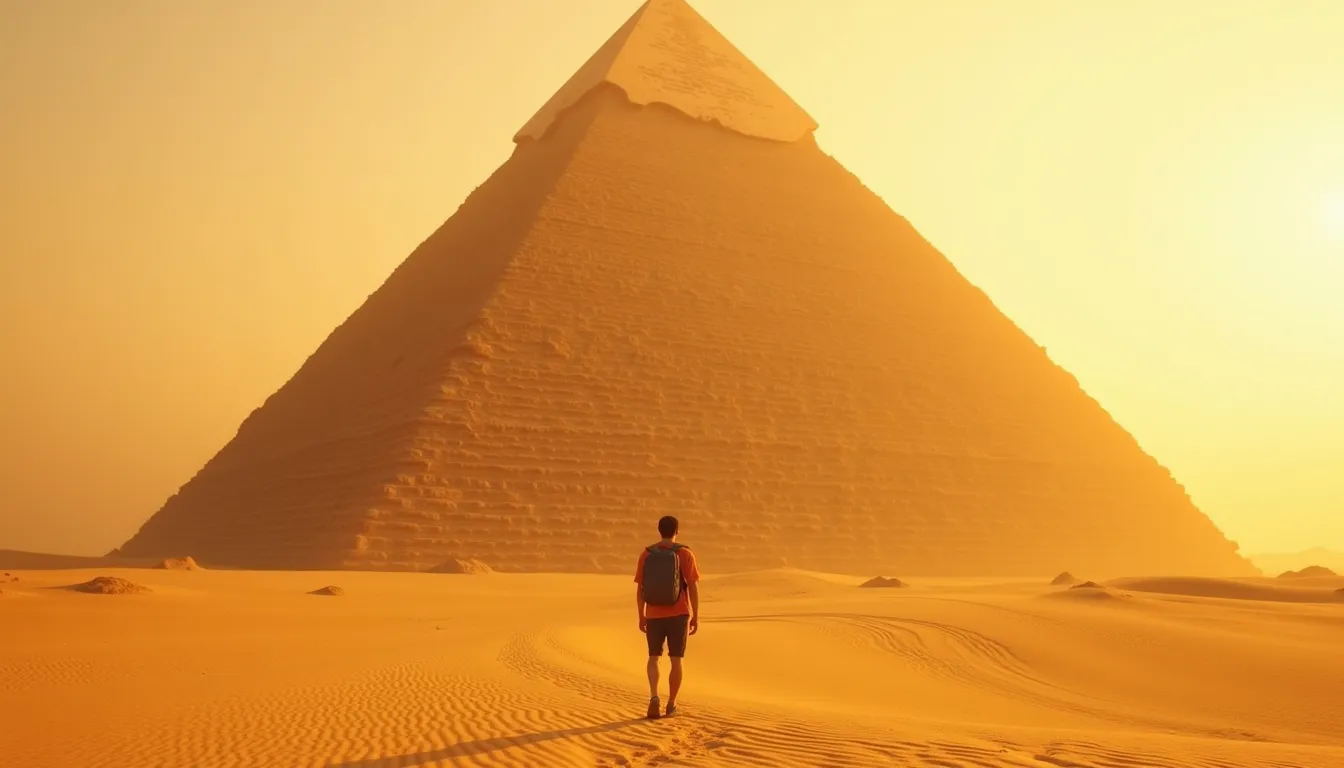Imagine standing before a colossal stone face, its enigmatic gaze fixed on the horizon for over 4,500 years. This is just one of the countless wonders awaiting you in Egypt, a land where history isn’t confined to museums but breathes through every sun-baked stone and whispers in the desert wind. In 2023, Egypt welcomed over 14.9 million visitors, a testament to its enduring allure. But beyond the iconic Pyramids and Sphinx, a tapestry of lesser-known marvels beckons the curious traveler. Let’s embark on a journey through time to uncover Egypt’s most captivating historical sites, where ancient mysteries and modern adventures intertwine.
The Giza Plateau: More Than Just Pyramids
While the Great Pyramid of Khufu rightfully commands attention, the Giza Plateau holds secrets that many visitors overlook. Did you know that the entire complex is riddled with hidden chambers and undiscovered passageways? In 2017, scientists using cosmic ray imaging discovered a massive void within the Great Pyramid, sparking new theories about its construction.
“The pyramids continue to surprise us,” says Dr. Zahi Hawass, renowned Egyptologist. “Each discovery opens new doors to understanding our ancestors.”
Luxor: The World’s Greatest Open-Air Museum
Luxor, the ancient city of Thebes, boasts an astonishing concentration of antiquities. The Luxor Temple, illuminated at night, creates a scene straight out of a pharaoh’s dream. But it’s the nearby Karnak Temple Complex that truly staggers the imagination. Covering over 200 acres, it’s larger than some ancient cities. The famous Hypostyle Hall, with its forest of 134 massive columns, will make you feel like an ant in a land of giants.
Abu Simbel: A Monument to Love and Engineering
Nestled in southern Egypt, the twin temples of Abu Simbel are a testament to both ancient and modern ingenuity. Built by Ramesses II, these massive rock-cut temples were painstakingly relocated in the 1960s to save them from the rising waters of Lake Nasser. The feat of moving these 3,000-year-old structures 65 meters up and 200 meters back from the Nile is almost as impressive as their original construction.
Saqqara: The Stairway to Heaven
Often overshadowed by its more famous neighbors, Saqqara is home to the world’s oldest known large-scale stone building: the Step Pyramid of Djoser. This architectural marvel, designed by the legendary Imhotep, marked the transition from simple mastaba tombs to the iconic pyramid shape. A visit to Saqqara feels like stepping into the cradle of ancient Egyptian civilization.
The Valley of the Kings: Where Pharaohs Rest
Across the Nile from Luxor lies the Valley of the Kings, final resting place of Egypt’s New Kingdom pharaohs. With 63 known tombs, including that of Tutankhamun, this necropolis is a treasure trove of ancient art and mythology. The vibrant colors and intricate hieroglyphs adorning the tomb walls have survived millennia, offering a vivid glimpse into the Egyptian afterlife.
Dendera: A Hidden Gem of Ptolemaic Egypt
For a taste of Egypt’s Greco-Roman period, venture to Dendera. The Temple of Hathor here boasts one of the best-preserved ancient Egyptian ceilings, complete with a famous depiction of the zodiac. The recently restored colors are so vivid, you’ll feel like the paint has barely dried.
Alexandria: Where East Meets West
Founded by Alexander the Great, Alexandria was once the intellectual capital of the ancient world. While much of its glory lies beneath the waves, sites like the Catacombs of Kom el Shoqafa and the modern Bibliotheca Alexandrina keep its spirit alive. The city’s unique blend of Mediterranean and Egyptian cultures offers a refreshing contrast to the ancient sites of Upper Egypt.
Siwa Oasis: An Otherworldly Desert Retreat
Tucked away in the Western Desert, Siwa Oasis feels like stepping into another world. Home to the famous Oracle of Amun, consulted by Alexander the Great, Siwa offers a unique blend of history and natural beauty. The mud-brick fortress of Shali and the eerie silence of the Great Sand Sea create an atmosphere unlike anywhere else in Egypt.
“Siwa is where the desert whispers ancient secrets,” muses local guide Ahmed Fathi. “It’s a place that changes you.”
For those seeking hidden gems beyond Egypt, consider exploring Nevada’s secret desert oasis or the forgotten villages of Tajikistan.
Practical Tips for Your Egyptian Adventure
The best time to visit Egypt is between October and April when temperatures are milder. Always carry water, wear sunscreen, and dress modestly, especially when visiting religious sites. Consider hiring a knowledgeable guide to unlock the stories behind the stones and avoid tourist traps.
A Journey Through Time Awaits
Egypt’s historical sites offer more than just a glimpse into the past; they’re a portal to a world where myth and reality intertwine. From the sun-baked stones of ancient temples to the bustling streets of modern Cairo, Egypt is a land that never ceases to amaze. As you stand before monuments that have witnessed the rise and fall of empires, you’ll feel a connection to something greater than yourself. Egypt doesn’t just preserve history; it brings it to life in ways that will leave you forever changed.
For those inspired by Egypt’s blend of history and mystery, you might also enjoy discovering Minerve, France’s hidden medieval fortress or exploring Germany’s fairytale town with 42 towers. And if you’re looking for a different kind of historical experience, why not discover San Francisco’s secret jazz oasis?
